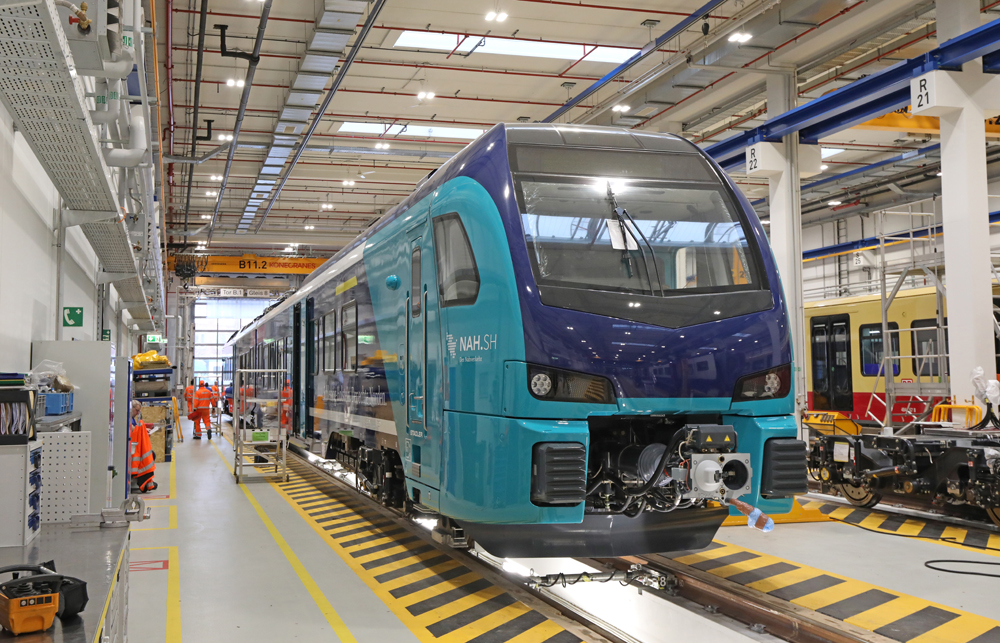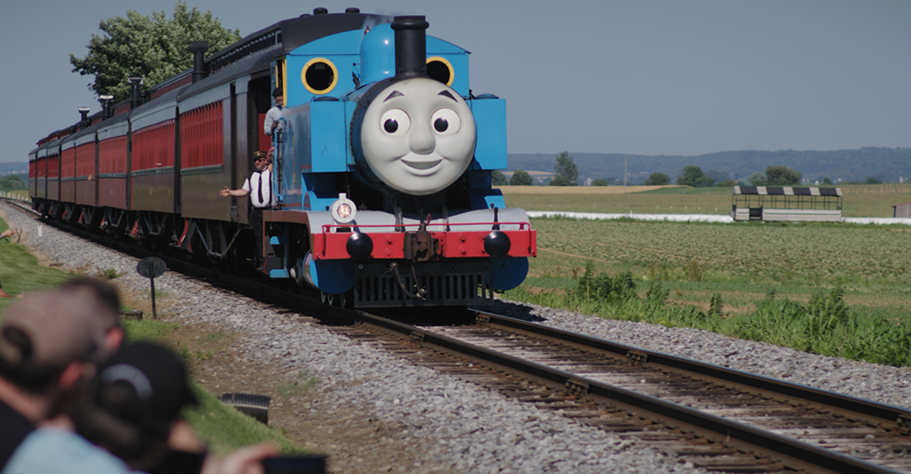
BUSSNANG, Switzerland — Rail equipment manufacturer Stadler, Utah State University, and the ASPIRE Engineering Center have signed a contract to develop and test a battery-powered passenger train, the first such multiple-unit train in North America.
The project will develop a two-car train based on Stadler’s FLIRT Akku train tailored for the American market. Stadler has already sold more than 110 FLIRT Akku vehicles in Europe, with the battery-powered trains replacing diesel fleets in several locations, the company said in a press release.
Stadler, which has a U.S. plant in Salt Lake City, will concentrate on design and production of the trainset, while ASPIRE will work on developing the trackside charging infrastructure. ASPIRE, Utah State, and Stadler say they hope to gain important insights into the decarbonization of American passenger transportation.
“With little to no electrified routes in the North American public rail transit system, a battery train is a great zero-emission alternative to diesel-powered vehicles,” Martin Ritter, CEO of Stadler US, said in a press release. “After a contract for a hydrogen-powered FLIRT for California, we are now excited to bring our battery solution to the United States. In ASPIRE we have found an excellent partner to develop the most efficient and fully integrated system for environmentally friendly mobility. We are proud to be able to work with local talent to design and build this technology here in Utah.”
Stadler’s hydrogen-powered trainset, for the Arrow commuter service in Southern California, was unveiled at last year’s InnoTrans trade show in Berlin [see “Stadler unveils first hydrogen train for US …,” Trains News Wire, Sept. 21, 2022].
“We are honored to partner with Stadler on this groundbreaking project,” said Dr. Regan Zane, director of the NSF ASPIRE Engineering Research Center at Utah State. “Success will bring design and manufacturing jobs to Utah. It will also chart the path to electrified commuter and light rail systems along the Wasatch Front. The battery-electric train solution will improve air quality and reduce operating costs while supporting shared charging infrastructure with trucks, buses, and cars. We’re beyond pleased to have such an incredible opportunity to be working with a world class manufacturer here in the state.”













Seeing as there is a lot of reports on troubles with cold sapping the battery power on EV’s I wonder how a train will fare in temps in the teens. Next there is also many reports on EV’s having greatly diminished reserve power when loads increase so what happens when you have a fully loaded train?
The first such battery-powered multiple-unit passenger train in North America? What about the Pop-Up Metro that you did an article on in 2021?
https://www.trains.com/trn/news-reviews/news-wire/pop-up-metro-aims-to-provide-affordable-passenger-operation/
I would hope the test would include possible degradation of battery charge/life in cold weather.